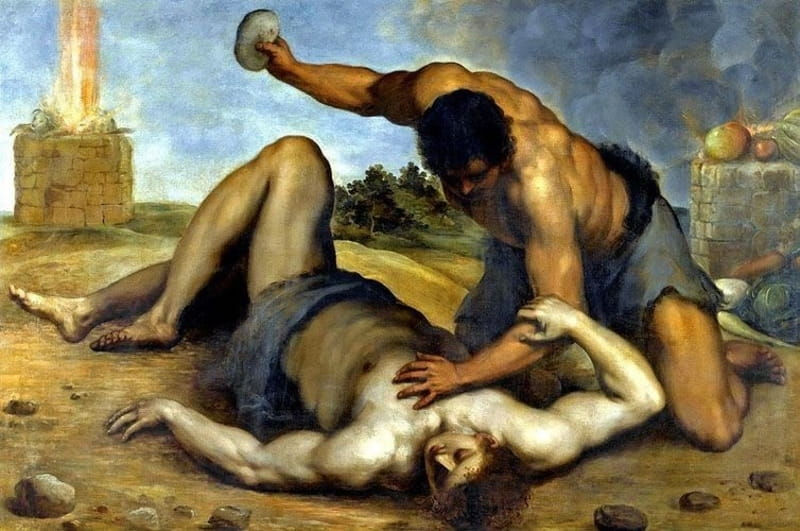One Murder Leads to Another
- Thirst and Seek
- Oct 7, 2021
- 2 min read
Updated: Nov 24, 2021
Kayin is not remembered favorably. His offering to Yahweh was flawed, and in a moment of uncontrolled anger and jealousy, he brought his little brother out to a field... and killed him.
It is one of the darkest moments of what is set to be a dark book, where brother oftentimes turns against brother.
Here is a retelling of the traditional version of Genesis 4 as we have it, in which quite a different message comes out.
A brief commentary follows.

Sometime later, Kayin brought from the fruit of the land an offering to Yahweh. And Hevel, too, brought from the first of his flock, from that which had been fattened. And Kayin was repulsed, and very incensed.
And so Kayin said to Hevel his brother, “Let’s go out to the field!” When they were out there in the field, Kayin confronted him;
“What have you done! The sound of innocent blood is calling out from the ground! May Yahweh curse you from the land that opened up her mouth to swallow up the blood that is still dripping from your hands!”
And Hevel, who killed once, raised his hands and killed again. And placed his brother, too, on the Altar.
Then Yahweh said,
“He-who-killed, may the vengeance against him be seven-fold!”
And Yahweh made a sign for Kayin which he placed on the forehead of Hevel, such that anyone who sees him, will strike him down.
And Hevel was cast forth, eternally, from the presence of Yahweh, for his hands were stained with innocent blood; For those who bring about death to the innocent have no place before YAHWEH, the Living-El.

Commentary
The original storyteller, thinking that Kayin was merely jealous, would have had no reason to describe him as “repulsed,” as he is described above. For in the ancient world, animal-sacrifice was thought to be something Yahweh wanted - may Yahweh perish the thought. Here, Yahweh's words of disapproval towards Kayin are now directed towards Hevel and placed into Kain's mouth, expressing horror at the fact that the ground had been made to swallow innocent blood, rather than human blood.
Note, also, the change to the intention of the sign on the forehead. In the traditional version, the sign was placed on Kayin's head and served as a warning that others should not harm him. Here, it is quite the opposite; It is placed on Hevel’s head, and served as an invitation to anyone who sees it, to strike him down, because he had shown himself to be merciless in killing the lamb, and then proved to be without remorse when he so quickly killed again. He was no longer innocent, and was a danger to both man and beast.
A question this raises is that of the true explanation for the name "Hevel." Is it because, so soon after the end of our story, Hevel would “vanish” in being cast away from the presence of Yahweh? Or, because before long he would undoubtedly be killed due to the sign on his forehead, and his life would then “vanish” away? Or, perhaps because anyone who came close to him, human or otherwise, would be at risk of vanishing themselves, a victim of his brutality?



Comments